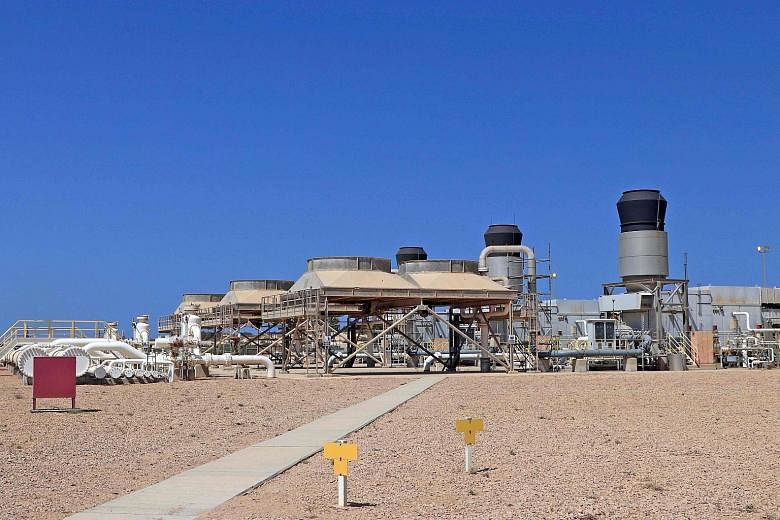SYDNEY • Oil extended its slide to a second day on a toxic cocktail of surging coronavirus cases in the US and Europe, dwindling prospects over pre-election stimulus in Washington and a steady resumption of supply from Libya.
Brent crude was down 89 US cents or 2.1 per cent at US$40.88 by 0647 GMT yesterday. US West Texas Intermediate (WTI) fell 89 US cents or 2.2 per cent to US$38.96, having fallen more than a dollar shortly after the start of trading. Brent fell 2.7 per cent last week and WTI lost 2.5 per cent.
The United States had its highest number yet of new coronavirus infections in two days until last Saturday, while in France new cases hit a record of over 50,000 on Sunday, raising worries about crude demand. Italy approved a partial lockdown and Spain announced a national curfew.
Meanwhile, Democrats and Republicans in the US accused each other of "moving the goalposts" in interviews on CNN as hopes for a deal before next week's election appeared to be in tatters.
On the supply side, Libya's National Oil Corp last Friday ended its force majeure on exports from two key ports and said production would reach one million barrels per day (bpd) in four weeks, a quicker ramp-up than analysts predicted.
"New barrels of Libyan oil come at a time when the crude oil market had just faced disappointment from the recently concluded Opec+ ministerial panel (which) made no new policy proposals," said commodities manager Avtar Sandu at Phillip Futures in Singapore.
Opec+, a grouping of producers including the Organisation of the Petroleum Exporting Countries and Russia, is also set to increase output by two million bpd next January after cutting production by a record amount earlier this year.
A little more than six months after Covid-19 sent oil prices into a tailspin, a second wave is threatening to take another bite out of energy demand. But there are several reasons why a repeat of April's bloodbath is unlikely. Flagging consumption is not coinciding with a price war, governments may be less likely to impose major lockdowns and demand in Asia is holding up.
"Demand issues tied to resurgent virus cases have taken the market's attention for the past few weeks," said Australia and New Zealand Banking Group's commodity strategist Daniel Hynes. "The supply side issues have now started to gain a little bit more prominence with Libya suggesting that their supplies will rise significantly over the next couple of months. That presents a new headwind for Opec."
If virus cases keep rising in Europe and the US, it is possible Opec+ will push back a planned easing of production cuts from January. Russian President Vladimir Putin last week signalled openness to delaying the taper. The group will decide on whether to stick to the current plan at a meeting set for Nov 30 to Dec 1.
BLOOMBERG, REUTERS

